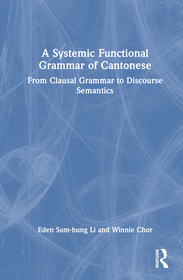
Linguistic Data Science and the English Passive
Modeling Diachronic Developments and Regional Variation
Series: Language, Data Science and Digital Humanities;
- Publisher's listprice GBP 95.00
-
45 386 Ft (43 225 Ft + 5% VAT)
The price is estimated because at the time of ordering we do not know what conversion rates will apply to HUF / product currency when the book arrives. In case HUF is weaker, the price increases slightly, in case HUF is stronger, the price goes lower slightly.
- Discount 13% (cc. 5 900 Ft off)
- Discounted price 39 486 Ft (37 606 Ft + 5% VAT)
Subcribe now and take benefit of a favourable price.
Subscribe
45 386 Ft

Availability
Not yet published.
Why don't you give exact delivery time?
Delivery time is estimated on our previous experiences. We give estimations only, because we order from outside Hungary, and the delivery time mainly depends on how quickly the publisher supplies the book. Faster or slower deliveries both happen, but we do our best to supply as quickly as possible.
Product details:
- Publisher Bloomsbury Publishing (UK)
- Date of Publication 11 December 2025
- Number of Volumes Hardback
- ISBN 9781350386549
- Binding Hardback
- No. of pages280 pages
- Size 234x156 mm
- Language English
- Illustrations 20 bw illus 700
Categories
Long description:
"
The choice between BE and GET as auxiliary verbs, as in ""She was promoted"" vs ""She got promoted"", is a central, grammatical feature, yet the many proposed nuances conditioning this phenomenon have escaped large-scale empirical validation to date. This book fills this gap, using multivariate statistical analyses of several large corpora to explore different factors determining the choice of English passive auxiliary.
Addressing both diachronic developments (using the Corpus of Historical American English) and synchronic regional variation (using the Corpus of Global Web-based English), the book employs methods that combine traditional corpus linguistics with newer machine-learning tools in an innovative and intricate manner. To circumscribe the variable context, the authors train a statistical model to distinguish central from peripheral passives. The study tests the influence of various predictors, derived from the previous literature on the passive, with the use of automated sentiment analysis and subject detection, manual animacy coding, distributional semantics, and a mixed-effects regression model.
Putting forward an automatic way of distinguishing more stative from more dynamic passives, the book demonstrates how to examine the passive construction in a much larger dataset than in previous studies, and shows how advanced computational models can be used to productively engage traditional philological questions, such as those related to language change and regional variation.
Table of Contents:
Introduction
1. The English Passive Voice
2. Centrality and the Passive Gradient
3. Operationalising Subject Responsibility
4. Operationalising Adversativity and Non-Neutrality
5. Distributional Verb Semantics
6. The Structure of the Proposed Models
7. Diachronic Developments in the Passive
8. Regional Variation in the Passive
9. Conclusion
References
Index






